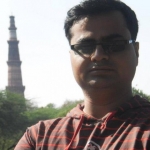Favourate secret Hangout in Delhi
With its battered walls of grey rubble perched on desolate hills, where its position gives it a natural advantage, “Tughluqabad fort” was raised as a stronghold rather than as an architectural marvel. King “Ghiyathu’d-Din Tughluq” (1321-25) built the fortified town of Tughluqabad, the third city of Delhi. Its two parts, the citadel and palaces along the southern walls forming one unit. The citadel is still intact, and the walls of palaces can also be discerned. The city-portion is, however, in extreme ruins, although one may make out the alignment of some of its streets. Faced with red sandstone relieved by marble, and with batter on exterior is the Ghiyathu’d-Din’s tomb. Enclosed within high walls forming an irregular pentagon. it still retains some of the characteristics of Khalji architecture due to the ‘spear-head’ fringe on the underside of its arched openings on three sides and its colour-scheme. Originally it stood within an artificial reservoir and was connected with Tughluqabad by a causeway, now pierced by the Qutb-Badarpur road. The sluice-gates of the vast reservoir are to be seen to the north of the main road close to the massive embankment between the northern and southern spurs of the hills.Ghiyathu’d-Din’s successor, Muhammad Tughluq (1325-51), added the small fortress of ‘Adilabad on the hill south of Tughluqabad, with which it shares the main characteristics of construction.

My usual routine is that, every morning I wake up and drop my 2 children at their school, then after exercising a bit I lead my tours. Meeting new friends and watching them experience my city is my aim. Over the years, India has become more hospitable and accepting nature. All cultures are welcomed from around the globe. My city is a surprise package for many. Having a population of approximately 25 million & traffic, Delhi is a busy city yet it has remarkably saved its heritage in the fo
Continue reading
Contact Jai Singh



